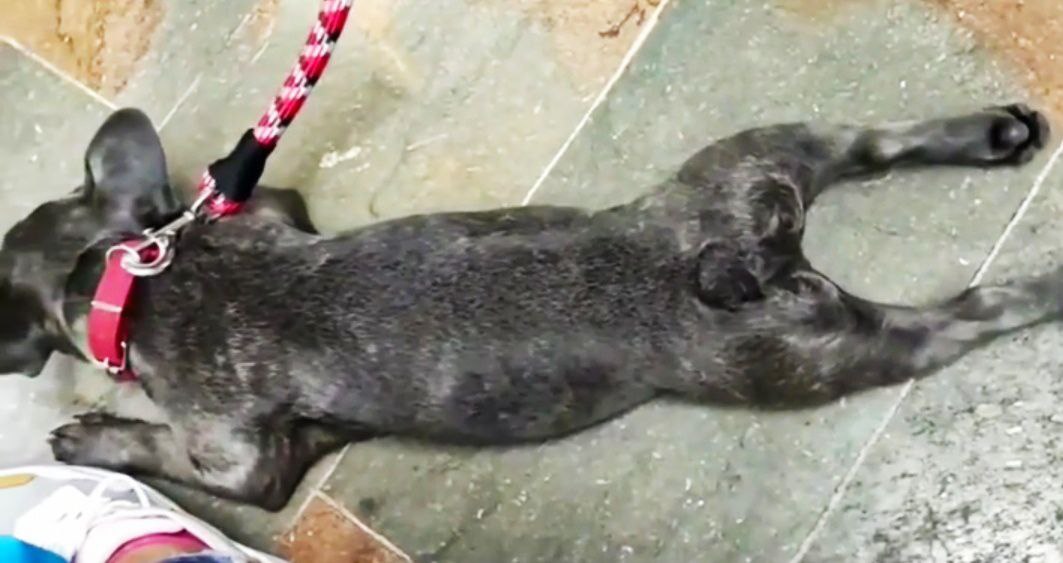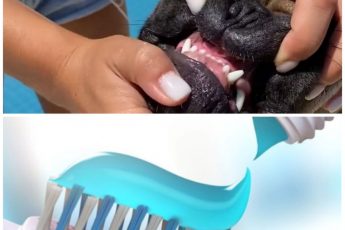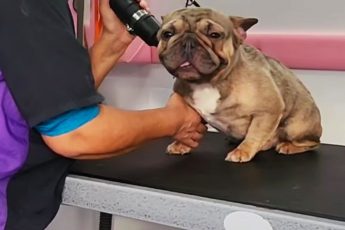French Bulldogs are popular, small-sized, and affectionate dogs. They have an endearing personality and are known for their compact size, playful nature, and short, sleek coat. However, one aspect of their anatomy that often goes unnoticed is their tail pocket. A tail pocket is a small, inverted skin fold found underneath the tail of French Bulldogs, which can sometimes cause health concerns for the dog.
In this article, we will explore what tail pockets are, why they occur in French Bulldogs, how to care for them, and what health concerns they can cause.
- What is a tail pocket?
- How do I know if my Frenchie has a tail pocket?
- Why Is the French Bulldog Tail Pocket Important?
- How to care for a tail pocket?
- What are the health concerns related to tail pockets?
- Frenchie Tail Pocket Infection: What To Look For
- Can tail pockets be prevented?
- French Bulldog Tail Problems
- What About a Tail Pocket That Presses Outward?
- French Bulldog Tail Pocket Surgery
- Hydrogen peroxide tail pocket
- FAQs
- Conclusion
What is a tail pocket?
A tail pocket is a small, inverted fold of skin found underneath the tail of French Bulldogs. It is a narrow opening between the tail and the anus that leads to a pocket of skin. The pocket is usually moist and warm, which makes it an ideal breeding ground for bacteria and yeast.
Why do French Bulldogs have tail pockets?
French Bulldogs have tail pockets because of the structure of their tails. French Bulldogs have naturally short and stubby tails, which often cause the skin to fold underneath it. This results in a small pocket, also known as the intertriginous fold, which is prone to infections.
How do I know if my Frenchie has a tail pocket?
A tail pocket is a fold of skin that is located at the base of a dog’s tail. It can be present in some French Bulldogs, but not all of them. If your Frenchie has a tail pocket, it can be a potential area for bacteria and dirt to accumulate, which can lead to infection and discomfort for your dog.
To check if your Frenchie has a tail pocket, gently lift its tail and look for a small indentation or fold of skin at the base of the tail. The area may also appear moist or have a strong odor if it is infected.
If you suspect that your Frenchie has a tail pocket, it is important to keep the area clean and dry. You can do this by gently wiping the area with a damp cloth or using a specially-formulated dog wipe. It is also important to monitor the area for any signs of infection, such as redness, swelling, or discharge.
If you are unsure about how to properly care for your Frenchie’s tail pocket, it is recommended to consult with a veterinarian or a professional dog groomer for advice.
Why Is the French Bulldog Tail Pocket Important?
The tail pocket in a French Bulldog is an important area to keep clean and dry. This is because the tail pocket can easily accumulate dirt, debris, and bacteria, which can lead to infections and discomfort for the dog.
If the tail pocket is not properly cleaned and maintained, it can become a breeding ground for bacteria and yeast, which can cause a condition known as a tail pocket infection. This can be a painful and uncomfortable condition for the dog and can lead to redness, swelling, discharge, and a foul odor.
In severe cases, a tail pocket infection may require veterinary treatment, including antibiotics and in some cases, surgery to remove the infected tissue.
To prevent tail pocket infections, it is important to keep the area clean and dry. This can be done by regularly wiping the area with a damp cloth or using a specially-formulated dog wipe. It is also important to keep the surrounding fur trimmed and to check the area regularly for any signs of infection.
Overall, proper care of a French Bulldog’s tail pocket is important for the dog’s health and wellbeing, and can help to prevent the development of painful and uncomfortable infections.
How to care for a tail pocket?
The care of tail pockets is crucial to maintain the hygiene and health of your French Bulldog. Here are some essential tips for tail pocket care:
- Regular Cleaning: Clean the tail pocket with a mild antiseptic solution or a pet wipe at least once a week. Make sure to dry it completely after cleaning to avoid any moisture buildup.
- Grooming: Trim the hair around the tail area to keep it clean and dry.
- Avoid Irritants: Avoid using harsh chemicals or shampoos that can irritate the skin around the tail area.
- Consult a Vet: If you notice any signs of infection, such as redness, swelling, or foul odor, consult a vet immediately.
What are the health concerns related to tail pockets?
Tail pockets can cause several health issues for French Bulldogs. Here are some common health concerns:
- Infections: The warm and moist environment of the tail pocket makes it prone to bacterial and yeast infections.
- Inflammation: Inflammation can occur if the tail pocket is not cleaned regularly, resulting in a painful condition called intertrigo.
- Abscesses: The accumulation of pus in the tail pocket can cause abscesses, which require immediate medical attention.
- Foul Odor: A strong and unpleasant odor can emanate from the tail pocket due to infections.
Frenchie Tail Pocket Infection: What To Look For
A French Bulldog’s tail pocket can be a breeding ground for bacteria and yeast, which can lead to a painful and uncomfortable infection. Here are some signs to look for if you suspect your Frenchie has a tail pocket infection:
Foul Odor: One of the most common signs of a tail pocket infection is a strong, unpleasant odor coming from the area. This can be caused by bacteria and yeast that have accumulated in the fold of skin.
Redness and Swelling: Inflammation in the tail pocket area can lead to redness, swelling, and discomfort for the dog.
Discharge: A tail pocket infection can cause discharge to build up in the area. The discharge may be yellow, green, or brown in color and may have a foul odor.
Scratching or Licking: If your Frenchie is constantly scratching or licking at the tail pocket area, it may be a sign of an infection.
Pain and Discomfort: In severe cases, a tail pocket infection can cause pain and discomfort for the dog, especially when touched or manipulated.
If you notice any of these signs, it is important to seek veterinary care for your Frenchie. The veterinarian can examine the tail pocket area, diagnose the infection, and prescribe the appropriate treatment, which may include antibiotics, medicated baths, and in severe cases, surgery to remove the infected tissue.
Can tail pockets be prevented?
Tail pockets cannot be entirely prevented, but proper care can reduce the risk of infections and health concerns. Here are some measures that can help:
- Regular Cleaning: Cleaning the tail pocket at least once a week can help prevent infections and keep the area clean.
- Grooming: Regular trimming of the hair around the tail can prevent moisture buildup.
- Regular Vet Checkups: Regular checkups with your vet can help detect any potential infections or health concerns.
French Bulldog Tail Problems
French Bulldogs can be prone to a variety of tail problems, including tail pocket infections, injuries, and deformities. Here are some common tail problems that Frenchies may experience:
Tail Pocket Infections: As mentioned earlier, tail pocket infections are a common problem for French Bulldogs. The fold of skin at the base of their tail can easily accumulate bacteria and yeast, which can cause infections and discomfort for the dog.
Tail Injuries: French Bulldogs have short, curly tails that can be easily injured. Common tail injuries in Frenchies include broken tails, sprains, and strains. These injuries can cause pain, discomfort, and may require veterinary care.
Hemivertebrae: Hemivertebrae is a congenital condition in which one or more vertebrae in the tail are misshapen or fused together. This can cause the tail to be kinked or twisted, and can lead to spinal problems and pain.
Screw Tail: Some Frenchies may have a screw tail, which is a tail that is tightly curled or twisted. This can cause the tail to become ingrown and can lead to infections and discomfort.
Tail Mites: Tail mites are a type of parasite that can infest the tail and cause itching, redness, and discomfort.
If you notice any problems with your Frenchie’s tail, it is important to seek veterinary care. The veterinarian can examine the tail, diagnose the problem, and recommend the appropriate treatment. Proper care and attention can help to prevent and manage tail problems in French Bulldogs, and ensure that they are healthy and comfortable.
What About a Tail Pocket That Presses Outward?
If you notice that your French Bulldog’s tail pocket is pressing outward, it could be a sign of an enlarged or inflamed tail pocket. In some cases, an enlarged tail pocket can be a result of a chronic infection or due to a congenital abnormality.
An outward pressing tail pocket can also be an indication of a skin fold dermatitis, which is a skin infection that can occur in any area of the body where there are folds of skin. In this case, the skin around the tail pocket may be red, itchy, and have a foul odor.
If you notice any signs of an enlarged or inflamed tail pocket, it is important to seek veterinary care. The veterinarian can examine the tail pocket, diagnose the problem, and recommend appropriate treatment.
Treatment for an enlarged or inflamed tail pocket may include medicated baths, topical ointments, or oral antibiotics to control any infection. In severe cases, surgery may be necessary to remove the infected or inflamed tissue.
It is important to keep the tail pocket area clean and dry to prevent infections from occurring. Regular cleaning with a damp cloth or specialized dog wipe can help to keep the area clean and prevent the buildup of bacteria and yeast that can lead to infection.
French Bulldog Tail Pocket Surgery
French Bulldog tail pocket surgery may be necessary in cases where a tail pocket infection or inflammation cannot be managed with medication or cleaning alone. Surgery may also be recommended for dogs that have a congenital abnormality or other condition affecting the tail pocket area.
During the surgical procedure, the veterinarian will remove the affected tissue and clean the area. In some cases, the surgeon may also remove a small portion of the tail to reduce the likelihood of the tail pocket reforming.
After surgery, the dog will need to wear an Elizabethan collar (cone) to prevent them from licking or biting the incision site. The dog will also need to take medication and receive follow-up care from the veterinarian, which may include medication to manage pain, antibiotics to prevent infection, and regular check-ups to monitor the healing process.
It is important to follow the veterinarian’s post-operative care instructions carefully to ensure that the dog makes a full recovery. This may include keeping the tail pocket area clean and dry, restricting the dog’s activity during the recovery period, and monitoring the incision site for any signs of infection or complications.
Overall, tail pocket surgery can be a safe and effective treatment option for French Bulldogs with tail pocket problems. It can help to reduce discomfort and prevent recurring infections, allowing the dog to lead a happier, healthier life.
Hydrogen peroxide tail pocket
Using hydrogen peroxide in a French Bulldog’s tail pocket is not recommended, as it can cause skin irritation and potentially harm the dog. Hydrogen peroxide is a strong oxidizing agent that can damage healthy tissues, as well as kill beneficial bacteria that help keep the skin and tail pocket area healthy.
While hydrogen peroxide can be used to clean wounds, it is not an appropriate solution for routine tail pocket cleaning. Instead, it is recommended to use a specialized dog wipe or damp cloth to clean the tail pocket area. These products are specifically designed for use on a dog’s skin and are safe and effective at removing dirt, debris, and bacteria from the tail pocket.
If you notice any signs of infection or inflammation in your Frenchie’s tail pocket, it is important to seek veterinary care. The veterinarian can examine the tail pocket, diagnose the problem, and recommend appropriate treatment, which may include medication and cleaning solutions that are safe for your dog.
FAQs
Can tail pockets be found in other dog breeds?
Yes, tail pockets can occur in other dog breeds, particularly in those with short tails, like the English Bulldog, Pug, and Boston Terrier.
How do I know if my French Bulldog has a tail pocket?
You can check for a tail pocket by lifting the tail of your French Bulldog and inspecting the area between the tail and the anus. If you notice a small fold of skin in that area, your dog may have a tail pocket.
Can I clean my French Bulldog’s tail pocket with soap and water?
It is not recommended to use soap and water to clean your French Bulldog’s tail pocket as it can irritate the skin and cause more harm than good. Instead, use a mild antiseptic solution or a pet wipe to clean the area.
How often should I clean my French Bulldog’s tail pocket?
It is recommended to clean your French Bulldog’s tail pocket at least once a week to maintain hygiene and prevent infections.
What should I do if I notice signs of infection in my French Bulldog’s tail pocket?
If you notice any signs of infection, such as redness, swelling, or foul odor, consult your vet immediately. Your vet can diagnose the condition and prescribe medication or treatment to alleviate the symptoms and prevent further complications.
What causes tail pockets on French Bulldogs?
Tail pockets are common in French Bulldogs and other breeds with short tails, and they can be caused by a variety of factors, including genetics, poor hygiene, and bacterial infections.
Can tail pockets on French Bulldogs be serious?
Yes, tail pockets can be serious if left untreated, as they can lead to infections and other health issues.
Can I prevent tail pockets on my French Bulldog?
Yes, you can prevent tail pockets by regularly checking your dog’s tail area, keeping the area clean and dry, and avoiding letting your dog sit or lie on damp or dirty surfaces.
Conclusion
Tail pockets are a common concern for French Bulldog owners. It is important to understand what tail pockets are, why they occur, and how to care for them. By following the tips mentioned in this article, you can ensure that your French Bulldog remains healthy, happy, and free from infections related to tail pockets.








